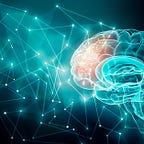Quantum Computers Explained Simply
Introduction
Ever since the 1960’s we have been able to create computers that are getting smaller and more powerful at an exponential rate but soon this process will reach its physical limits. The exact rate at which the number of transistors grow is known as Moore’s Law which is an observation that shows every year the number of transistors in a computer are being doubled. Computer parts are approaching the size of an atom. The question is why is this even a problem??
The Problem….
A computer is made of many simple components. An transistor is the simplest form of a data processor in computers. They are basically a switch to a gate that can block or let information through. This information is made up of bits which can either be set to 0 or 1. With parts getting tinner and tinner quantum makes things tricky!(Of course it does. Its quantum!) As we have previously covered we know that an transistor is basically an electric switch. Electricity is electrons moving from one place to another so a switch basically blocks electrons from moving in a certain direction. A typical scale for transistors is 7–10 nanometers. They are expected to shrink even further to 5 nanometers. Most devices are sub 100 nanometers. As transistors are shrinking to the size of only a few atoms, electrons may just transfer themselves to the other side of a blocked passage through a process called Quantum Tunneling.
The solution?
Scientists are trying to uses the unusual quantum properties to their advantage by building quantum computers. In normal computers bits are the smallest unit of information. Quantum computers use qubits which can also be set to 1 of 2 values. 0 and 1 are the systems possible states like the photons horizontal or vertical polarization. In the quantum world the qubit can be in any proportions of both of these states at once. This is known as super position. The moment you test the value such as by sending a photon through a filter, it collapses to be either fully horizontally or vertically polarized. As long as its unobserved the qubit is in a superposition of probabilities for 0 and 1 which you can’t predict which it will be but the second you measure it collapses into one of the definite states.
Four classical bits can be in 1 of 16 (2⁴) configurations at once. Four qubits in superposition can be in all of those 16 combinations all at once. This number grows exponentially with each extra qubit. 20 of them can simultaneously store a million values. Qubits also have a property known as entanglement which can simply be explained as a lose connection that makes the qubits react to a change in the others state instantaneously, no matter how far they are apart. This means by only measuring one qubit you can figure out the properties of the other one without ever having to look.
Qubit Manipulation
A normal logic gate(many transistors put together) gets a simple set of inputs and produces a definite output. A quantum gate manipulates a an input of super positions, rotates probabilities and produces another super position output. In brief, a quantum computer sets up some qubits, applies quantum gates to entangle them, manipulate probabilities and finally measure the outcome as an actual sequence of 0’s and 1’s. This means that you get the entire lot of calculations that are possible with your setup all done at the same time. In the end you can only measure one of the results and it’ll only probably be the one you want so you may to have to double check and try again. Though if we cleverly exploit superposition and entanglement this could be exponentially more efficient than a normal computer.
Application
While quantum computers will most likely replaces our day to day computers there are areas in where they would be superior. One of these aspects is data base searching. To find something in a database a normal computer may have to test every single one of its entries. Quantum computers need only square root of that time. The most famous use of quantum computers is in ruining IT security. Right now your banking data is being kept secure by a encryption system where you give everyone a public key to encode a message only you can decode. The problem is that this public key can be used to calculate your private key. Doing that math on a normal computer would take years of trial and error but a quantum computer could do it easily with exponential speed up.
Another use of quantum computers is in simulations. Simulations of the quantum world are very resource intensive, and even for bigger structure such as molecules they often lack accuracy. So why not simulate quantum physics with actual quantum physics? This could provide new insights on proteins which could revolutionize medicine. As of right now we don’t know if quantum computers are going to be a specialized tool or something that will replace the normal computer. That’s one of the many questions about the quantum world that can hopefully be answered in the future.
